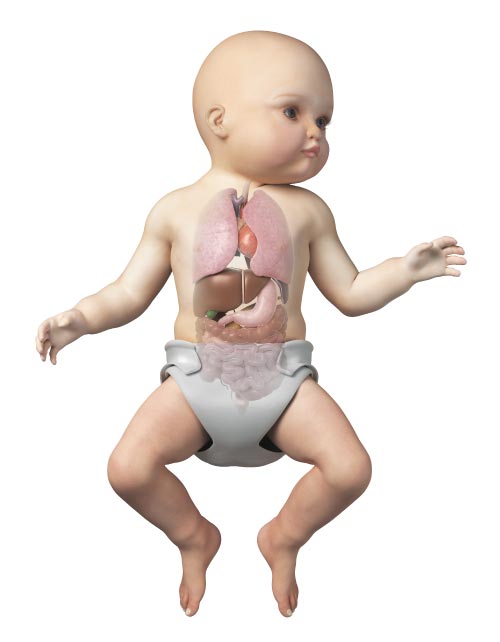Who is at risk?
Pneumococcal disease is prevalent among children under 2 years old, children staying in group child care and those who have underlying medical conditions such as HIV infection and chronic heart or lung conditions.
Adults who are 65 years old and older presents higher risk of infection. Adults between 19 and 64 years old with chronic illnesses such as lung, heart, liver or kidney disease, asthma, diabetes or alcoholism are at risk too. In addition, their risk increases if they are presented with conditions that weaken their immune system (HIV/AIDS, cancer or damaged or absent spleen); living in nursing homes or other long term care facilities; has cochlear implants or CSF leaks and those who smoke cigarettes.
How is it transmitted?
Pneumococcal disease can be transmitted from person-to-person by direct contact with respiratory secretions such as saliva or mucus. The bacterium, S. pneumoniae colonises the back of the nose and it is usually found in many people, especially children (30-70%) but they may not get ill (carriers). As your child grows, there will be lesser S. pneumoniae found in their nasopharynx. This is because they have acquired a more matured mucosal immunity against the dominant strains found in the community or due to reduction in exposure.
Diagnosis
As with any disease, early diagnosis and treatment are vital for survival. In order to diagnose meningitis and bacteraemia,blood samples or CSF are collected and sent for laboratory testing. For non-invasive pneumococcal diseases (sinusitis and otitis media), diagnosis is usually made by healthcare practitioners through physical examinations and cultures of nasal and ear discharges.
Treatment
Most pneumococcal infections are mild. Invasive pneumococcal disease (IPD) like meningitis, pneumonia and bacteraemia is associated with serious complications and not infrequently deaths.
Pneumococcal disease can be treated with antibiotics. The antibiotics prescribed usually work against a wide range of bacteria which may cause these infections apart from the pneumococcus eg Haemophilus influenzae, Staphylococcus aureus or Mycoplasma pneumoniae. Specific antibiotics will be given once the sensitivity of the bacteria is known through antibiotic sensitivity testing.
Prevalence
- About 14.5 million cases of serious pneumococcal disease were reported by the World Health Organisation (WHO) in 2000. Out of this, 826 000 deaths were recorded among children between the ages of 1 to 59 months.
- Pneumonia claimed the lives of 1.25 million children in 2011.
- Asia records the highest occurrence of pneumococcal disease (both invasive and non-invasive).
- One in three people will succumb to pneumococcal disease.
Prevention
Besides good personal hygiene, pneumococcal disease can be prevented through vaccinations. There are 2 common types of pneumococcal vaccines namely Pneumococcal Conjugate Vaccine (PCV) and Pneumococcal Polysaccharide Vaccine (PPSV). The PCV is recommended for children and it protects against multiple strains of pneumococcal bacteria. PCV13 which protects against 13 strains of pneumococcus is also recommended for adults beyond 50 years of age and those with certain underlying medical conditions.
Studies have shown that the PCVs reduce the carriage of pneumococci in the nasopharynx and hence prevent the transmission and spread of the disease.
What is herd immunity?
Besides getting the pneumococcal vaccination, it is important to get the yearly influenza vaccine as the risk of developing secondary pneumococcal disease increases if you have the flu.
An educational contribution by Malaysian Paediatric Association.
Otitis media
Sinusitis
Signs and Symptoms: cold or respiratory illness that has been getting better and then worsens; high fever with discoloured nasal discharge that does not improve, with or without a cough.
Complications: milder forms of pneumococcal disease though more common and classified as non-invasive pneumococcal disease. May lead to hearing loss and delayed speech.
Meningitis
Signs and Symptoms: stiff neck, fever and headache, pain when looking into bright lights, and confusion. Babies will have drowsiness, poor eating
Complications: most severe type of invasive pneumococcal disease. One in ten of children below 5 years who are infected will usually die while others may suffer hearing loss or developmental delay.
Pneumococcal pneumonia
Signs and Symptoms: fevers and chills, cough, rapid breathing or difficulty in breathing and chest pains.
Complications: if left untreated immediately will lead to empyema (infection of the space between membranes surrounding the lungs and the chest cavity), pericarditis (inflammation of the sac surrounding the heart), atelectasis (collapsed lungs) and collection of pus in the lungs. The death rate from pneumococcal pneumonia is 5% and the rate increases among elderly patients.
Bacteraemia
Signs and Symptoms: Fever, chills and drowsiness.
Complications: happens when the bacterium infects the bloodstream. The risk of death is 4 out of 100 children and it increases among the elderly.






Comments